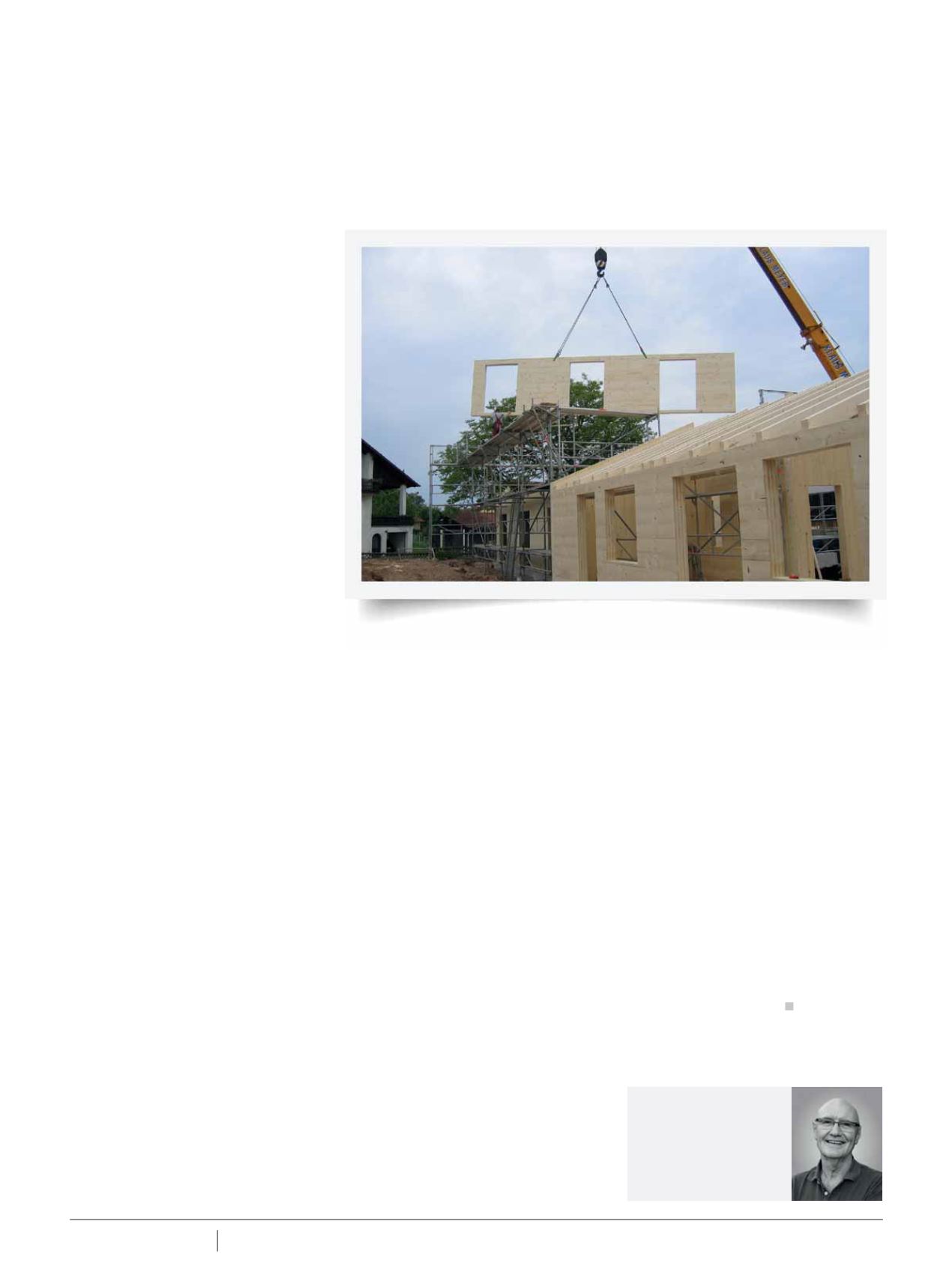

4 6
BUILDING CONNECTION Spring 2019
BOOM INMASS TIMBERCONSTRUCTION
I
ncreasing pressures to reduce
costs and time in building
construction have created the
opportunity for mass wood systems to
boom in North America and the United
Kingdom with hundreds of new projects
underway.
This was demonstrated at the
International Mass Timber Conference
held in Portland Oregon during March,
which was the largest-ever gathering in
the world of cross-laminated timber and
other mass wood experts.
The event attracted 1,600 attendees
from 30 countries, including a large
group of delegates from Australia,
covering the spectrum of forestry,
building design, development,
prefabrication and construction.
With an attendance of 500 at the first
event 3 years ago, the organisers are
now projecting an increase to 10,000
delegates by 2025 to keep pace with the
uptake of offsite construction systems.
This phenomenal growth reflects the
construction industry’s acceptance
of offsite mass wood buildings and
the rate of conversion from steel and
concrete structures in a wide range
of building types for residential and
commercial developments.
In addition, there has been an
expansion in design capacity with
architects and engineers developing
a greater awareness of timber and
wood requirements in the design and
specification of buildings.
Not only is the construction industry
expanding, the supply chain is also
responding with new manufacturing
plants for cross-laminated timber
(CLT), nail-laminated timber, glulam
beams and panels, mass plywood
panels, dowel-laminated timber and
laminated veneer lumber (LVL).
A presentation that indicated
how mass wood construction can
address the housing crisis in the UK
was delivered by Modular Housing for
Swan Housing managing director Paul
Williamson. Swan Housing is a London
based not-for-profit Association formed
in 1994 to provide high-quality and
affordable homes to rent and buy.
To solve the housing shortage in the
UK would require some 300,000 homes
per year and using existing building
methods would need some one million
workers at a time when trades are in
rapid decline.
To contribute to the solution Swan
decided to set up a construction model
moving from ‘craft’ to ‘process’ using
lean manufacturing principles to
encourage improvements and reach a
target of one house completed every
day.
By moving from a ‘one-off’ concept
to a ‘system’ using DfMA (design
for manufacture and assembly) it
established a supply process that offers
customers a selection of housing with
1.2 million individual options for each
house, and an average build time of 16
weeks from order to occupancy.
To enable this mass production
approach the houses are fully
manufactured in Cross laminated
timber (CLT) allowing digitally
controlled production, with a resulting
improvement in productivity of 60%
which justifies the higher material cost.
It indicated its next move is robotics
in manufacturing to increase production
rates and further improve efficiency.
These trends will provide the
opportunity of a strong future for mass
wood prefabrication and construction
in Australia, but will need collaboration
between the various sectors involved
in the process of design, supply,
manufacture and construction to
ensure the outcomes are successful.
Mass wood is definitely on the rise, so
watch out for the boom!
Kevin Ezard
discusses the phenomenal growth of timber construction across the globe.
EZARD’S CONNECTION
Kevin Ezard provides
business communication
and marketing consultancy
services to the timber and
wood products industry.
An increase in uptake of offsite construction systems has seen a boom in CLT being
used across residential and commercial builds in recent times.
















